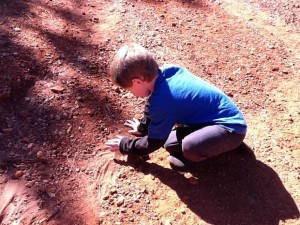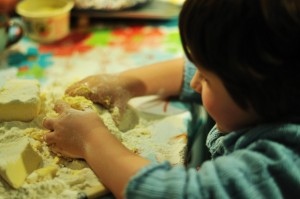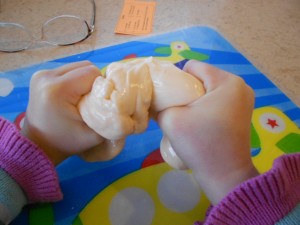Hands-on play is more than fun. It’s a tremendous way to train the brains of young children and to promote the development of all kinds of thinking skills. Hands can not only build towers with blocks, they also build pathways and connections in brains.
 In a day, there are countless ways for children to learn and play and be hands-on. Puzzles, blocks, construction sets, painting, play-dough and other toys are certainly hands-on, but there are other ways too. Finger-foods, getting dressed, turning pages in a book, and splashing in the bath are hands-on activities. Toys are not always needed, either.
In a day, there are countless ways for children to learn and play and be hands-on. Puzzles, blocks, construction sets, painting, play-dough and other toys are certainly hands-on, but there are other ways too. Finger-foods, getting dressed, turning pages in a book, and splashing in the bath are hands-on activities. Toys are not always needed, either.
 Not just play activities, but helping with tasks can also be hands-on as kids put their hands to work folding the clean, dry towels in the laundry basket, washing dishes, returning spoons from the dishwasher to the drawer, helping prepare food, or unpacking groceries.
Not just play activities, but helping with tasks can also be hands-on as kids put their hands to work folding the clean, dry towels in the laundry basket, washing dishes, returning spoons from the dishwasher to the drawer, helping prepare food, or unpacking groceries.
Instead of whistling while you work and play, sing some songs with your child that use actions, such as the Itsy-bitsy Spider or Wheels on the Bus.
 Hands-on play is very sensory. There are dozens of recipes online for various play-doughs. Many are very easy and they are certainly much less expensive to make at home. Goop and Slime do not keep their shapes like play-dough but they feel cool and slippery. Try freezing a batch of jello to see how different that feels.
Hands-on play is very sensory. There are dozens of recipes online for various play-doughs. Many are very easy and they are certainly much less expensive to make at home. Goop and Slime do not keep their shapes like play-dough but they feel cool and slippery. Try freezing a batch of jello to see how different that feels.
In his wonderful book, Play: How it Shapes the Brain, Opens the Imagination, and Invigorates the Soul, Dr. Stuart Brown writes, “…object play with the hands creates a brain that is better suited for understanding and solving problems of all sorts.” These will be two skills regularly needed by children in preschool, kindergarten, and beyond.
Young children are very definitely hands-on and now we know why. Hands-on play is exercise for brain muscles. Is there a way to include some hands-on play for your child today?
